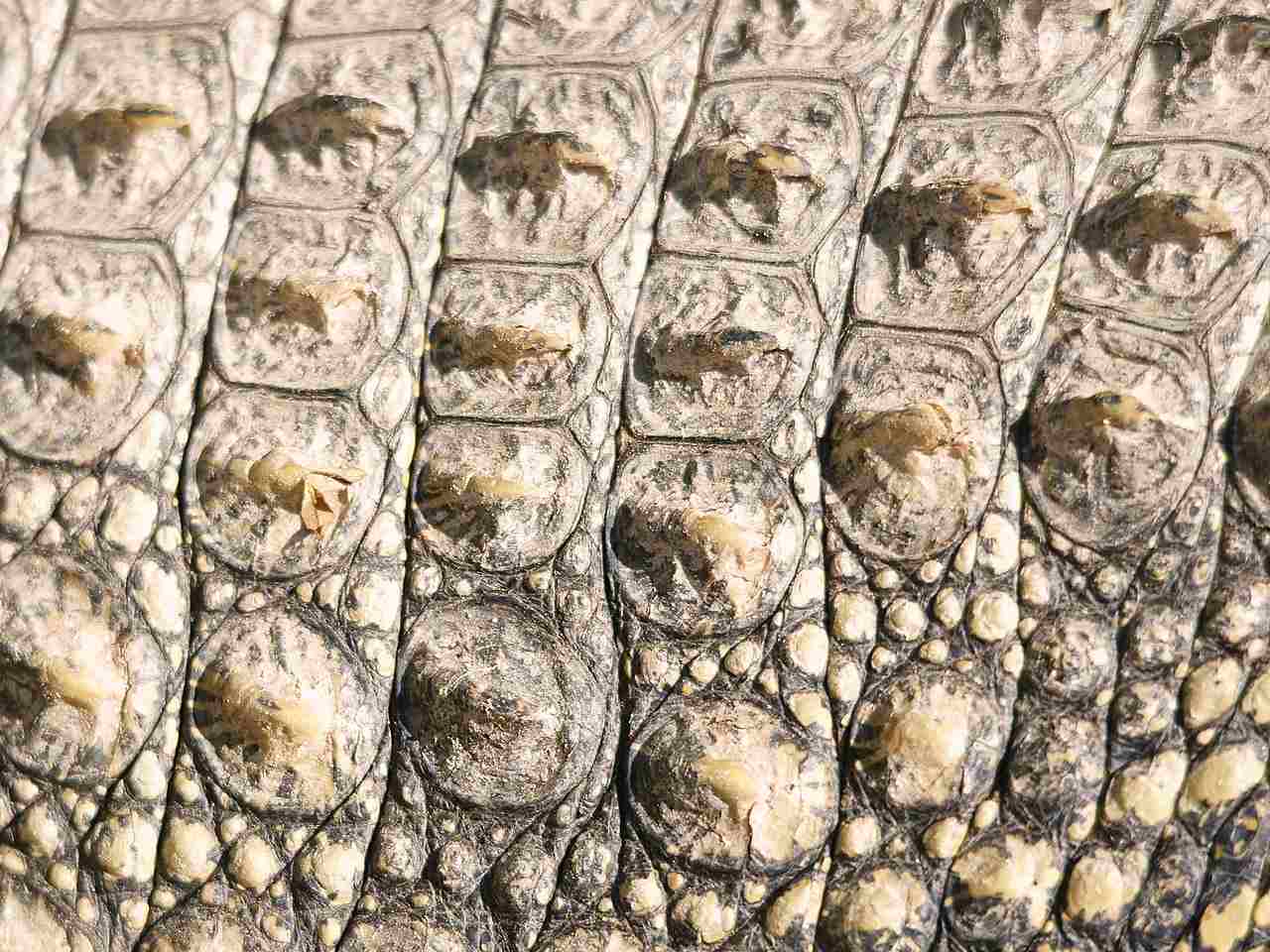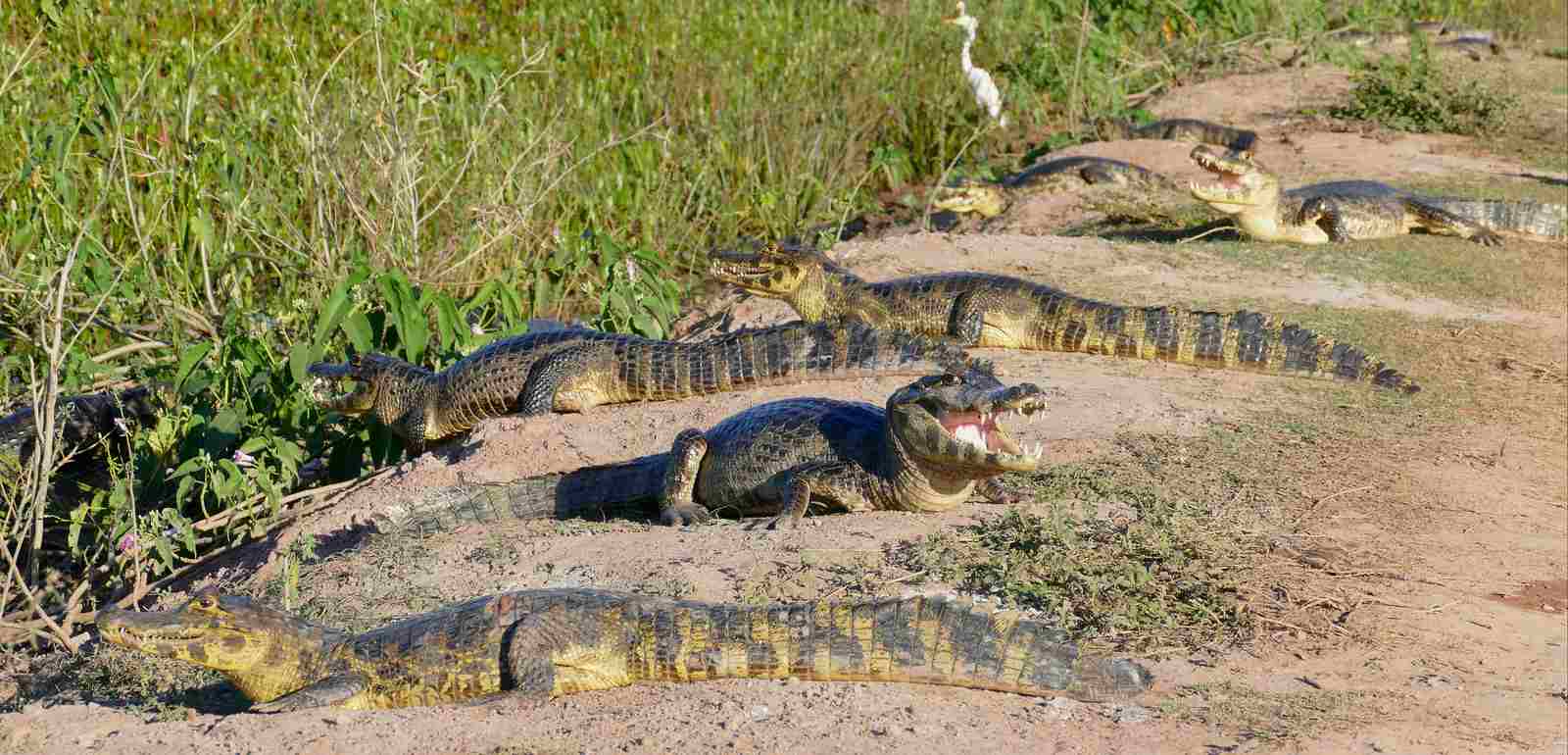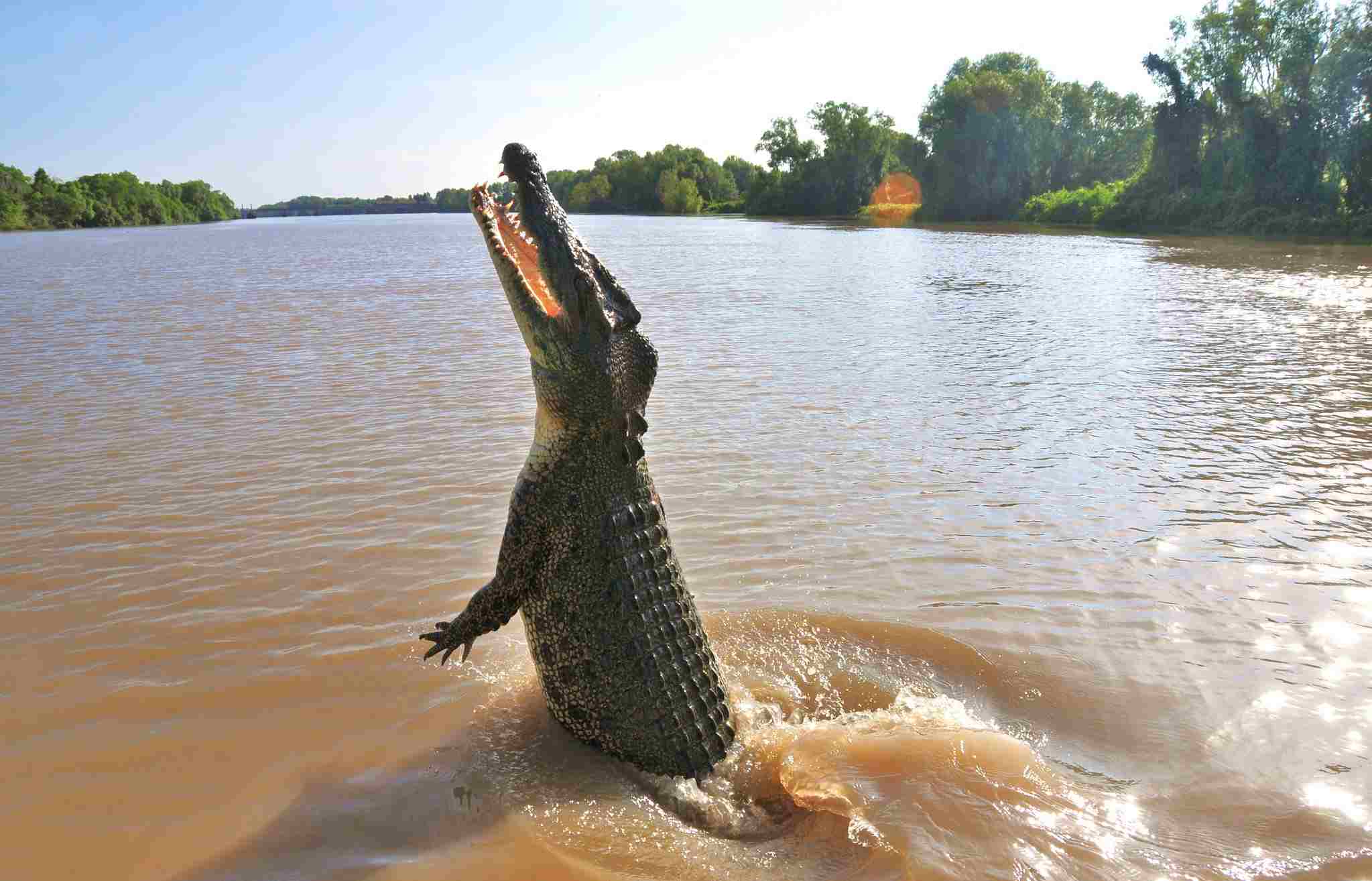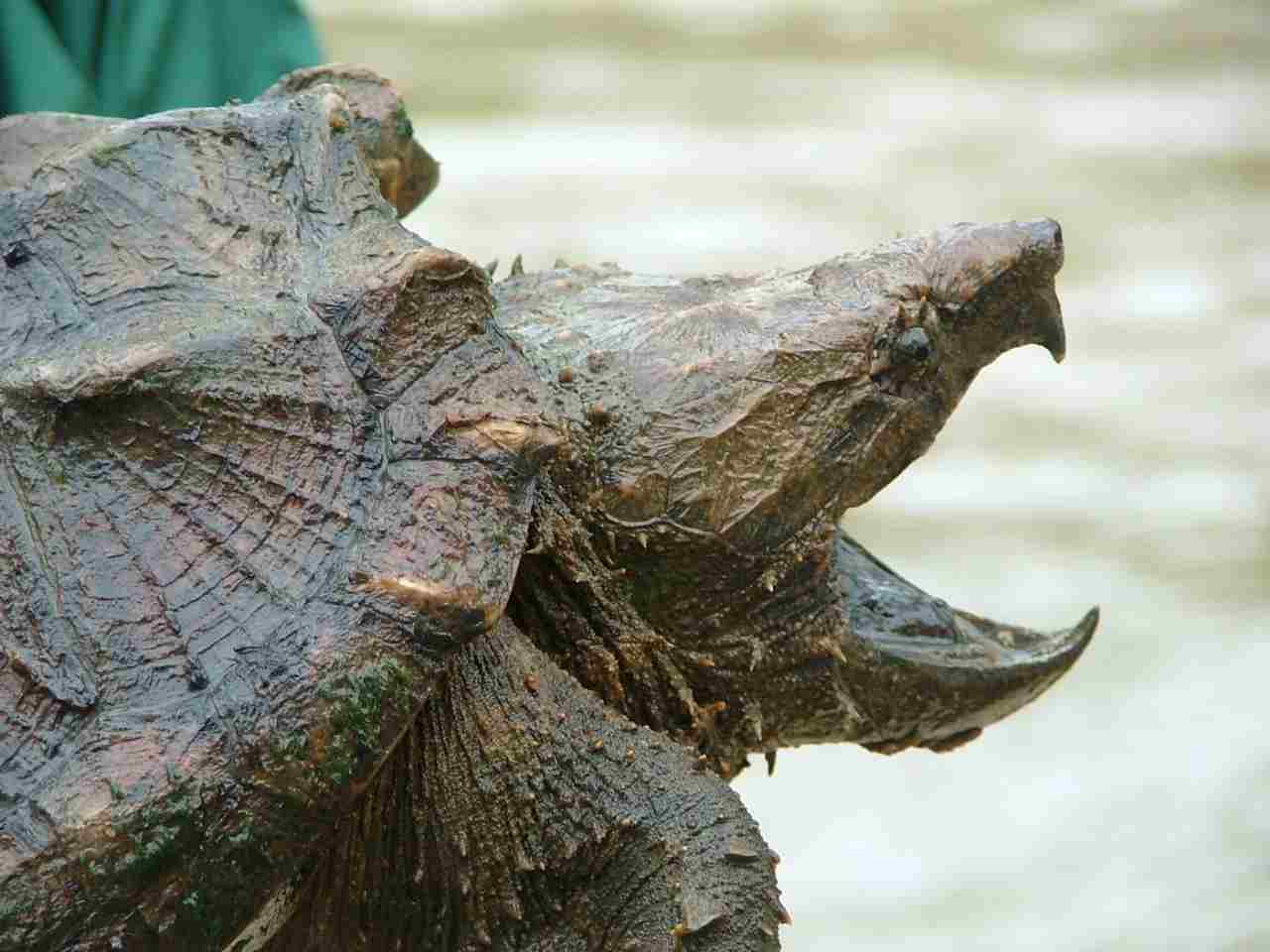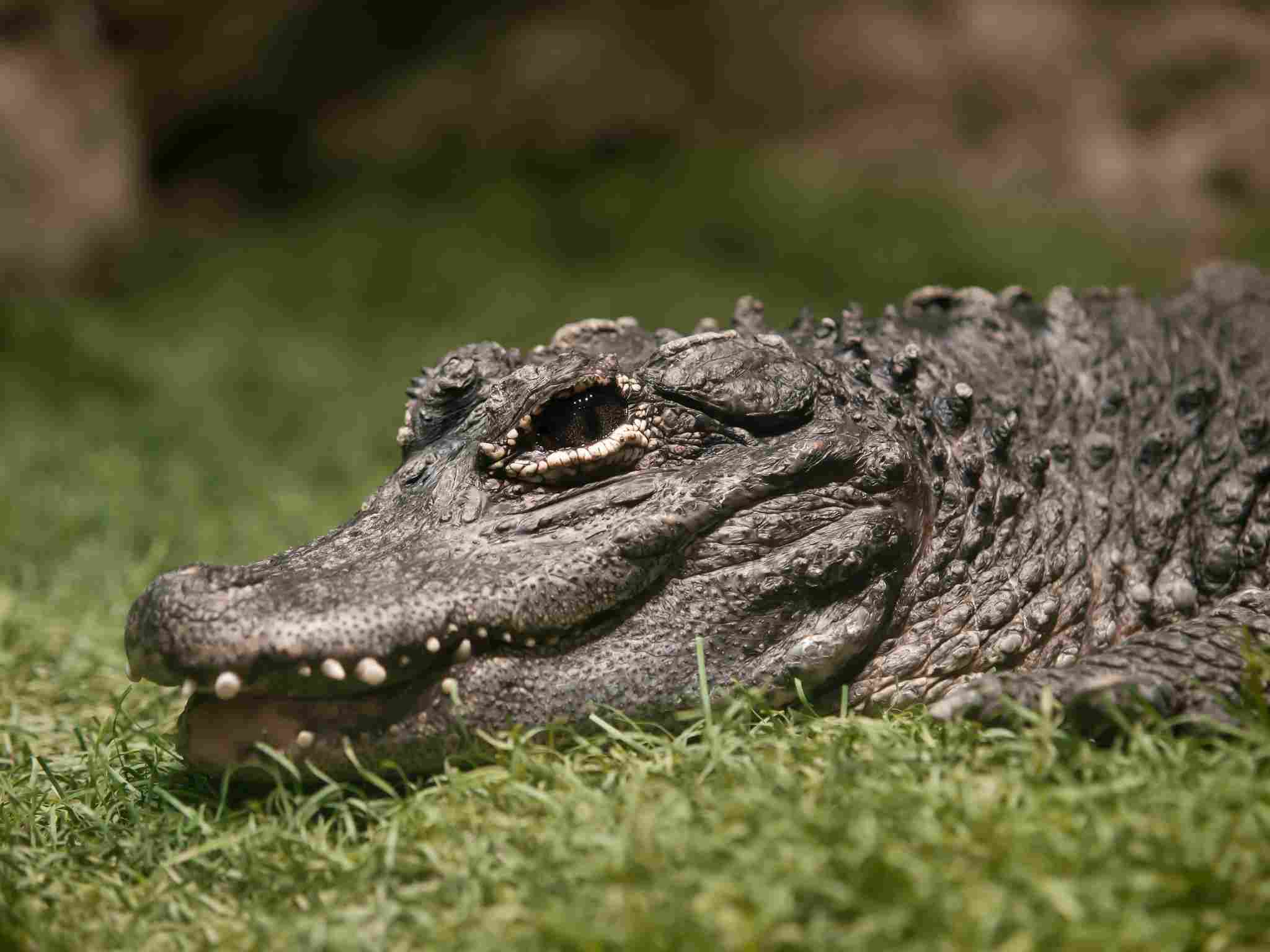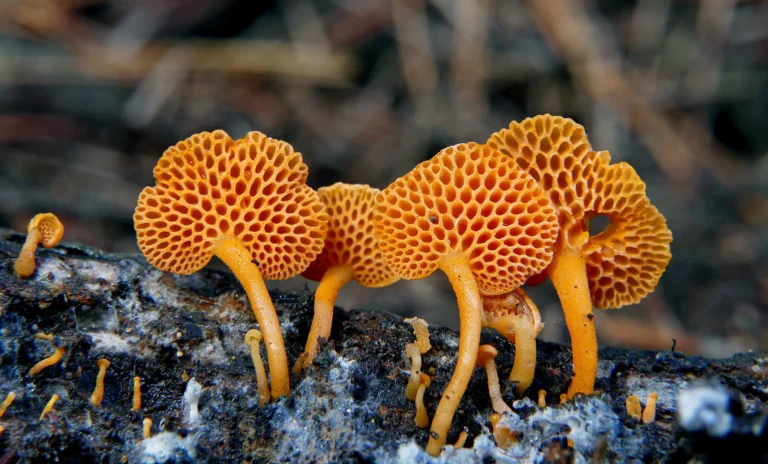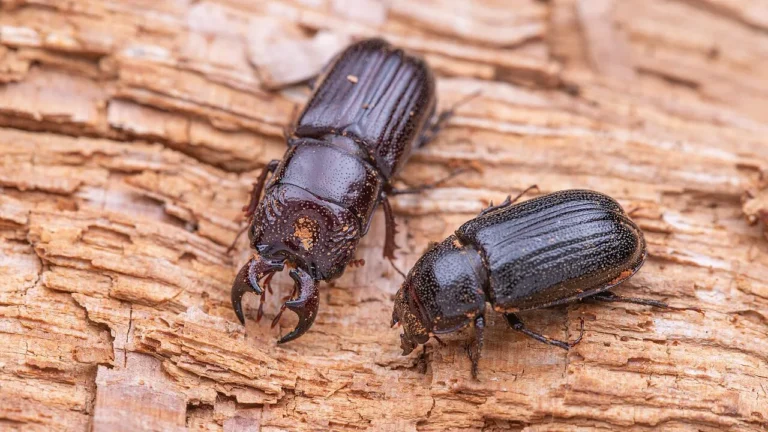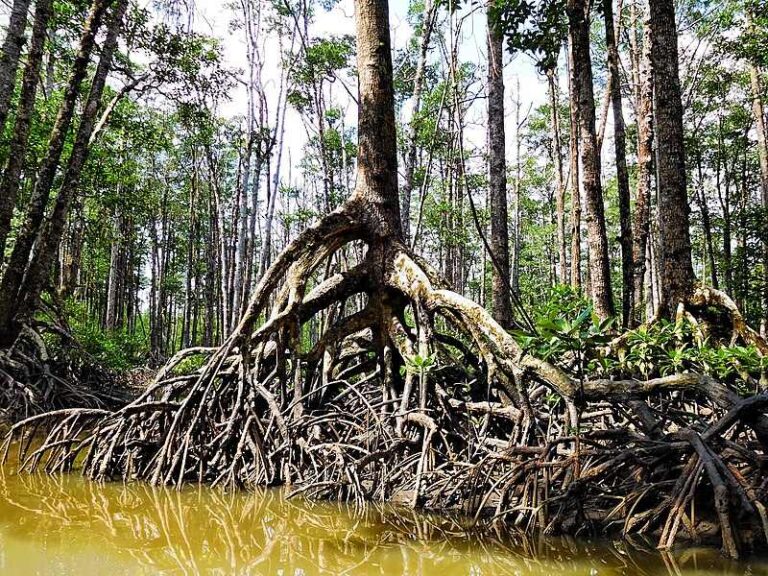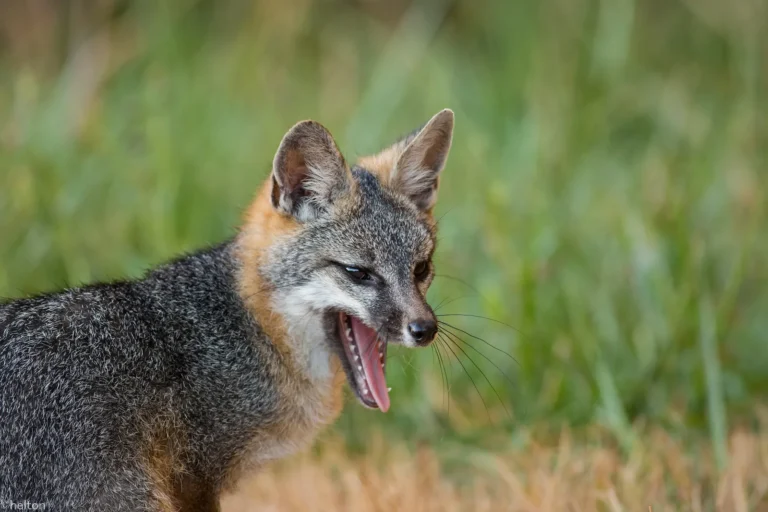Caiman Vs Alligator Vs Crocodile Size, Weight, Overall Comparison
In a potential clash involving a caiman, alligator, and crocodile, we delve into the shared and distinct characteristics of these closely related reptiles. Despite their similarities, size, strength, and predatory traits set them apart. This analysis outlines these differences before exploring a confrontation, predicting the likely outcomes based on their physical attributes and natural behaviors.
Caiman vs Alligator vs Crocodile Fight Prediction: Assessing the Potential Outcome in a Confrontation
In a face-off between a caiman, alligator, and crocodile, the outcome is shaped by their shared ancestry and differences in size, strength, and aggression. While these reptiles are closely related, the crocodile’s larger size, greater weight, strength, aggression, and powerful bite force position it as a formidable contender, likely to outmatch both the alligator and caiman.
I). Shared Characteristics:
– Caimans, alligators, and crocodiles belong to the crocodilian family, sharing certain physical features, habitats, and behaviors. However, variations in these traits influence their roles in the reptilian hierarchy.
II). Size and Weight Disparities:
– Crocodiles, generally the largest among the three, possess greater size and weight, contributing to their advantage in physical confrontations. Alligators come next in size, while caimans are the smallest and comparatively weaker.

III). Strength and Aggression Levels:
– Crocodiles exhibit heightened aggression levels compared to alligators and caimans. This, coupled with their larger size and greater strength, gives crocodiles a significant edge in a direct confrontation.
IV). Powerful Bite Force:
– Crocodiles boast a more powerful bite force compared to alligators and caimans. This formidable bite, along with their aggressive nature, contributes to the crocodile’s dominance in potential fights.
V). Alligator’s Advantages Over Caiman:
– While alligators share some similarities with crocodiles, they are generally smaller and less aggressive. In a confrontation, an alligator is likely to outmatch a caiman due to its size and strength advantages.
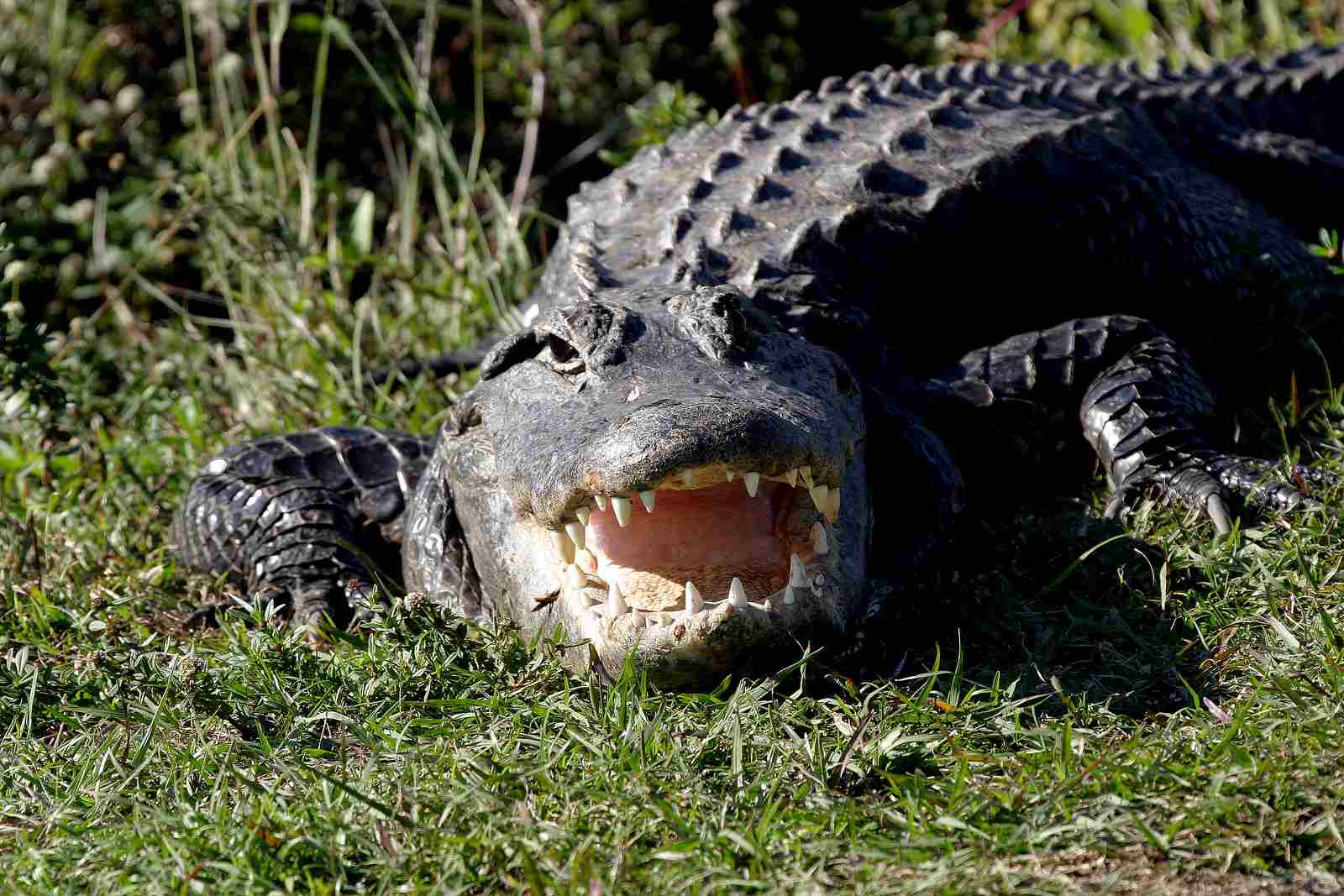
VI). Overall Dynamics:
– In this scenario, the crocodile emerges as the likely victor in a fight against both the alligator and caiman. Its larger size, greater weight, strength, aggression, and powerful bite force collectively contribute to its dominance. The alligator, in turn, holds an advantage over the caiman, showcasing the nuanced hierarchy within the crocodilian family.
*Details of Comparison
| Criteria | Caiman | Alligator | Crocodile |
| Taxonomy | Family: Alligatoridae, Subfamily: Caimaninae, Genus: Caiman | Family: Alligatoridae, Subfamily: Alligatorinae, Genera: Alligator |
Family: Crocodylidae, Various Subfamilies, Various Genera
|
| Appearance | Robust, broad snout, olive to brown color | Broad, U-shaped snout, dark coloration |
V-shaped snout, generally lighter coloration
|
| Size | Generally smaller, 4-8 feet | Moderate size, males 11-15 feet |
Variable, some species exceed 20 feet
|
| Weight | Lighter, 15-100 kg | Heavier, males 200-450 kg |
Varied, some over 1000 kg
|
| Bite Force (PSI) | Moderate, around 1500 PSI | Strong, approximately 2000 PSI |
Variable, some over 5000 PSI
|
| Physical Offensive Advantages | Agile, sharp teeth | Strong bite, mobility |
Speed, powerful tail
|
| Physical Defensive Advantages | Water retreat, osteoderms | Quick water retreat, bony plates |
Aggressive defense, scaly skin
|
| Speed | Up to 32 km/h | Around 30 km/h | Up to 32 km/h |
| Agility | Maneuverable in water | Nimble despite size |
Agile in and out of water
|
| Senses | Excellent eyesight, keen hearing | Well-developed eyesight, sensitive snouts |
Exceptional eyesight, specialized sensory pits
|
| Overall Physical Capacity | Balanced for size | Robust build, strength, and agility |
Varied capacities depending on species
|
| Habitat Preference(s) | Freshwater with vegetation | Freshwater habitats like swamps |
Adaptable to freshwater, brackish, and saltwater
|
| Tracks | Distinctive tracks with claw marks | Clawed tracks with toe impressions |
Clawed tracks resembling alligators
|
| Lifespan | 20-40 years | 30-50 years |
Varied, some over 70 years
|
| Mode of Feeding | Opportunistic, ambush predator | Generalist, patient hunter |
Versatile feeders, various strategies
|
| Intelligence | Limited | Moderate, capable of learning |
Considered more intelligent
|
| Social Behavior | Solitary, minimal interactions | Generally solitary, occasional social behavior |
Varied, some species with complex social structures
|
| Mode of Reproduction | Oviparous, guard eggs briefly | Oviparous, females guard nests and hatchlings |
Oviparous, diverse nesting behaviors
|
| Parental Behavior | Minimal parental care | Protective, may assist hatchlings |
Varies by species, some with extensive care
|
| Proximity to Human-Inhabited Areas | Near freshwater, cautious of humans | Commonly near human-inhabited areas |
Some species inhabit areas close to humans
|
| Behavior Toward Humans | Shy, rarely aggressive unless provoked | Wary, aggression may occur in specific situations |
Can be aggressive, especially in human presence
|
| Danger Posed to Humans | Generally low threat | Less dangerous than crocodiles |
More dangerous, potential for severe attacks
|
| Associated Precautions | Awareness and avoidance | Education and avoiding direct contact |
Strict precautions in known crocodile areas
|
| Conservation Status | Various statuses, influenced by habitat loss | Least concern, conservation efforts important |
Varied, some species endangered
|
1. Taxonomy:
Caiman:
Family: Alligatoridae
Subfamilies: Caimaninae, Alligatorinae
Genus: Caiman
Alligator:
Family: Alligatoridae
Subfamily: Alligatorinae
Genera: Alligator (two species – A. mississippiensis and A. sinensis)
Crocodile:
Family: Crocodylidae
Subfamilies: Crocodylinae (true crocodiles), Alligatorinae (alligators and caimans), Gavialinae (gharials)
Genera: Various, including Crocodylus (true crocodiles), Alligator, Caiman, Gavialis (gharials)
2. Appearance:
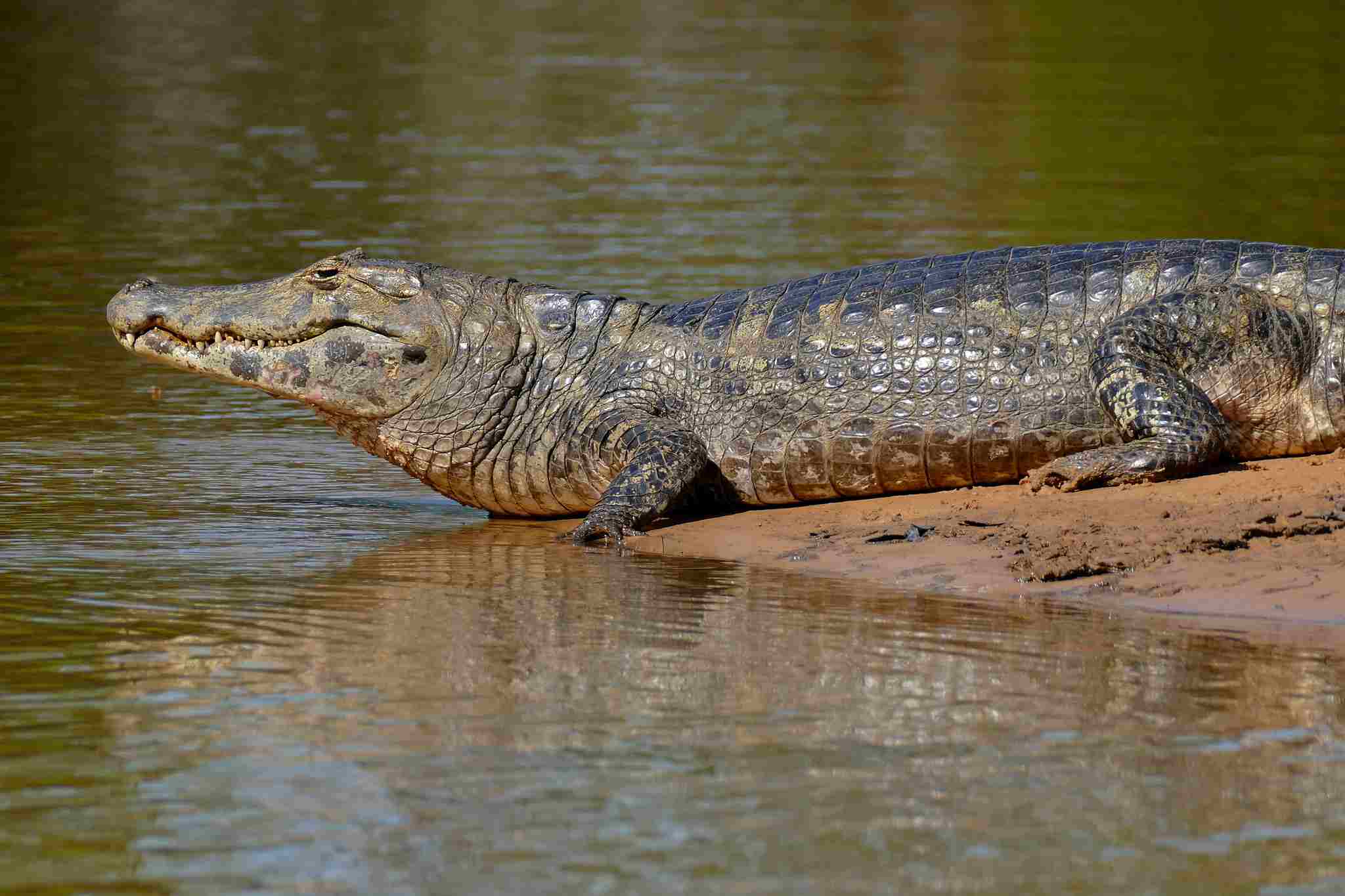
Caiman:
Robust build, broad snout
Typically olive to brown coloration
Bony plates, called osteoderms, on their back for protection
Alligator:
Broad, U-shaped snout
Darker coloration, varying from black to dark brown
Osteoderms on their back contribute to a tough exterior
Crocodile:
V-shaped snout, longer and more pointed
Lighter coloration, often gray or olive
Prominent osteoderms, providing a rugged appearance
Comparison: Caimans and alligators share a broad snout, while crocodiles have a more pointed one. All three exhibit osteoderms, aiding in protection.
Ecological Implications: Differences in appearance may contribute to ecological niches and behavioral adaptations for feeding and defense in various habitats.
3. Size:
Caiman:
Generally smaller than alligators and crocodiles
Varies by species but commonly 4 to 8 feet in length
Alligator:
Moderate size, with males reaching 11 to 15 feet
American alligators are larger than Chinese alligators
Crocodile:
Variable sizes; some species can exceed 20 feet
Saltwater crocodiles are the largest crocodile species
Comparison: Crocodiles tend to be larger, especially saltwater crocodiles, while caimans are smaller, and alligators fall in between.
Ecological Implications: Size influences the role each species plays in the ecosystem, affecting prey selection and competition for resources.
4. Weight:
Caiman:
Typically lighter compared to alligators and crocodiles
Ranges from 15 to 100 kg depending on the species
Alligator:
Heavier than caimans, with males weighing 200 to 450 kg
Females are generally smaller
Crocodile:
Significant variation; species like saltwater crocodiles can weigh over 1000 kg
Nile crocodiles are also known for substantial weight
Comparison: Crocodiles generally outweigh both alligators and caimans, with alligators being heavier than caimans.
Ecological Implications: Weight impacts energy requirements, hunting strategies, and overall ecological roles within their habitats.
5. Bite Force (PSI):
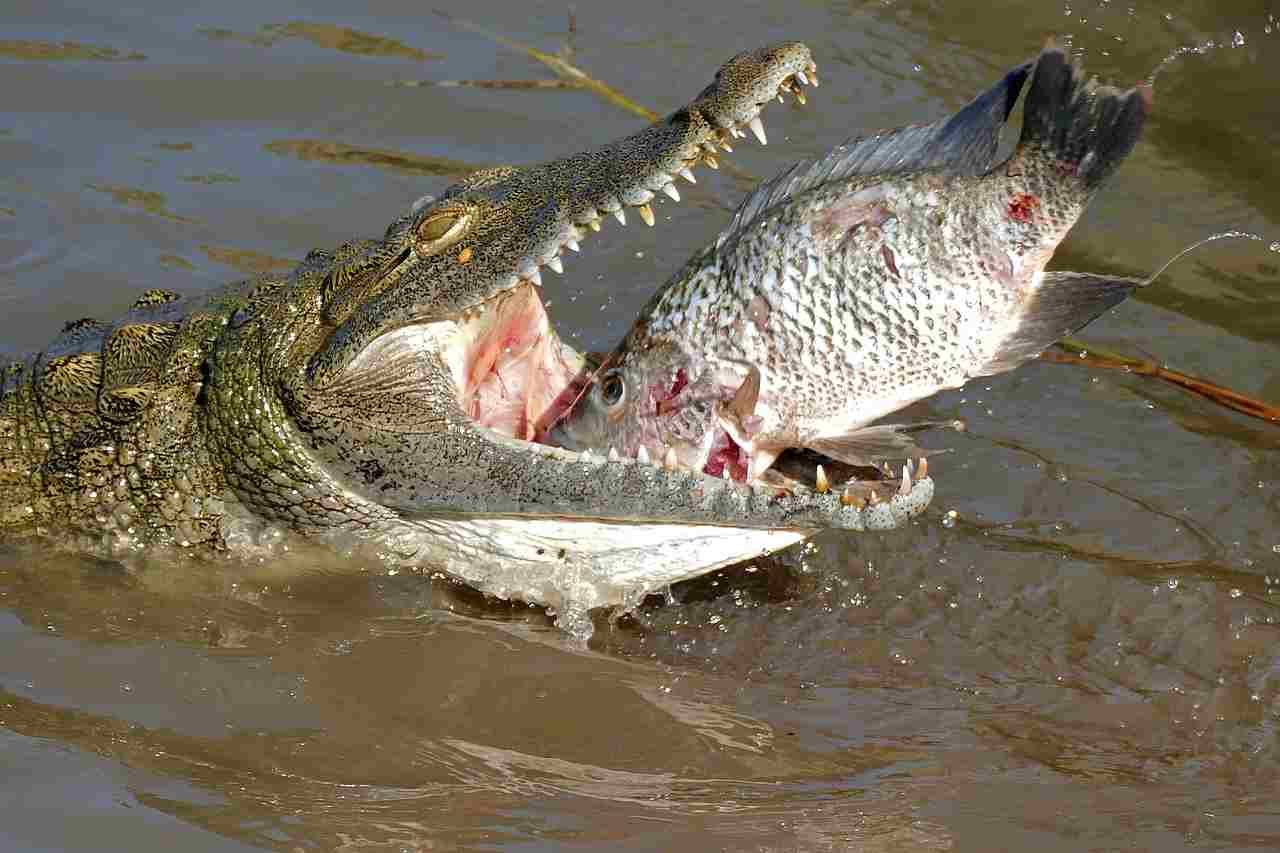
Caiman:
Moderate bite force, around 1500 PSI
Adapted for capturing smaller prey
Alligator:
Strong bite force, approximately 2000 PSI
Crushes prey with a powerful bite
Crocodile:
Varies by species; Nile crocodiles can exert over 5000 PSI
Exceptionally powerful bite for capturing and subduing large prey
Comparison: Crocodiles generally have the strongest bite force, followed by alligators, while caimans have a relatively moderate bite force.
Ecological Implications: Bite force influences prey selection and feeding behavior, shaping the ecological relationships within their respective ecosystems.
6. Physical Offensive Advantages:
Caiman:
Agile in water, able to swiftly navigate through vegetation
Sharp teeth and powerful jaw for capturing prey
Alligator:
Strong bite combined with impressive mobility in water
Ambush predators, utilizing stealth to approach prey
Crocodile:
Exceptional speed in water, enabling efficient pursuit of prey
Long, powerful tail aids in quick and forceful strikes
Comparison: Crocodiles often have a combination of speed and power, while alligators and caimans rely on a mix of bite force and agility.
Ecological Implications: Varied offensive strategies contribute to different roles in ecosystems and prey adaptation.
7. Physical Defensive Advantages:
Caiman:
Utilizes water as a refuge; retreats into dense vegetation
Osteoderms on the back provide armor against predators
Alligator:
Quick retreat into water; powerful tail for defense
Hard, bony plates offer protection from predators
Crocodile:
Aggressive defensive behavior; may stand their ground
Tough, scaly skin acts as a natural armor
Comparison: Alligators and crocodiles display more confrontational defensive behaviors, while caimans often rely on concealment and retreat.
Ecological Implications: Defensive strategies contribute to the balance of predator-prey relationships and competition within their habitats.
8. Speed (Km/hour or Mile/hour):
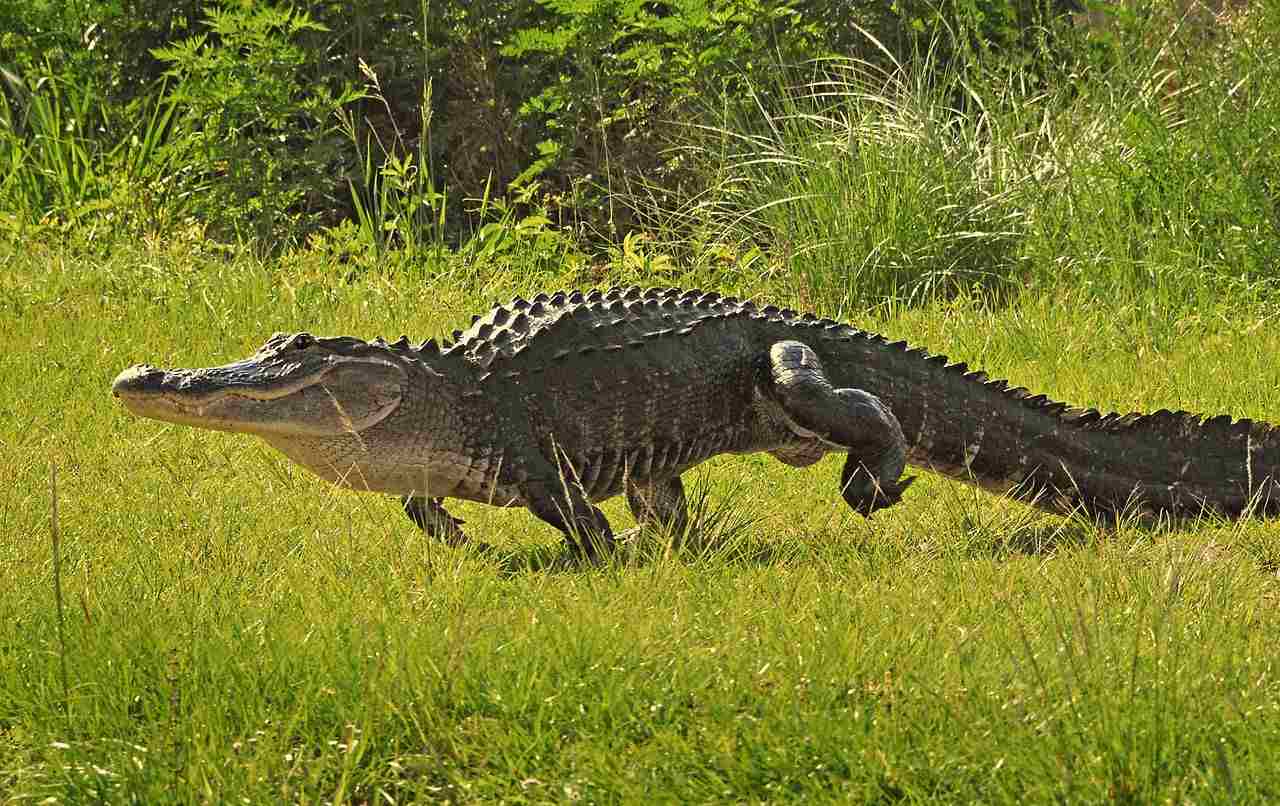
Caiman:
Capable of reaching speeds up to 32 km/h (20 mph)
Agile swimmers, especially in confined water spaces
Alligator:
Surprisingly fast in short bursts, reaching around 30 km/h (18 mph)
Well-adapted for quick movements in water
Crocodile:
Impressive speed, particularly in water; can reach 32 km/h (20 mph)
Excellent pursuit predators during aquatic hunts
Comparison: Similar speeds in water, with slight variations; crocodiles are generally known for efficient aquatic locomotion.
Ecological Implications: Speed influences hunting success and evasion of predators, shaping the dynamics of their ecosystems.
9. Agility:
Caiman:
Highly agile in water, maneuvering through dense vegetation
Quick turns and twists during pursuit of prey
Alligator:
Demonstrates agility in water, especially during hunting
Surprisingly nimble despite their large size
Crocodile:
Agile both in and out of water; can swiftly change direction
Graceful and efficient hunters, adapting to various terrains
Comparison: All three exhibit impressive agility, with caimans excelling in dense vegetation, alligators displaying agility despite their size, and crocodiles adapting to diverse environments.
Ecological Implications: Agility is crucial for navigating different habitats and catching prey, contributing to their ecological roles.
10. Senses:
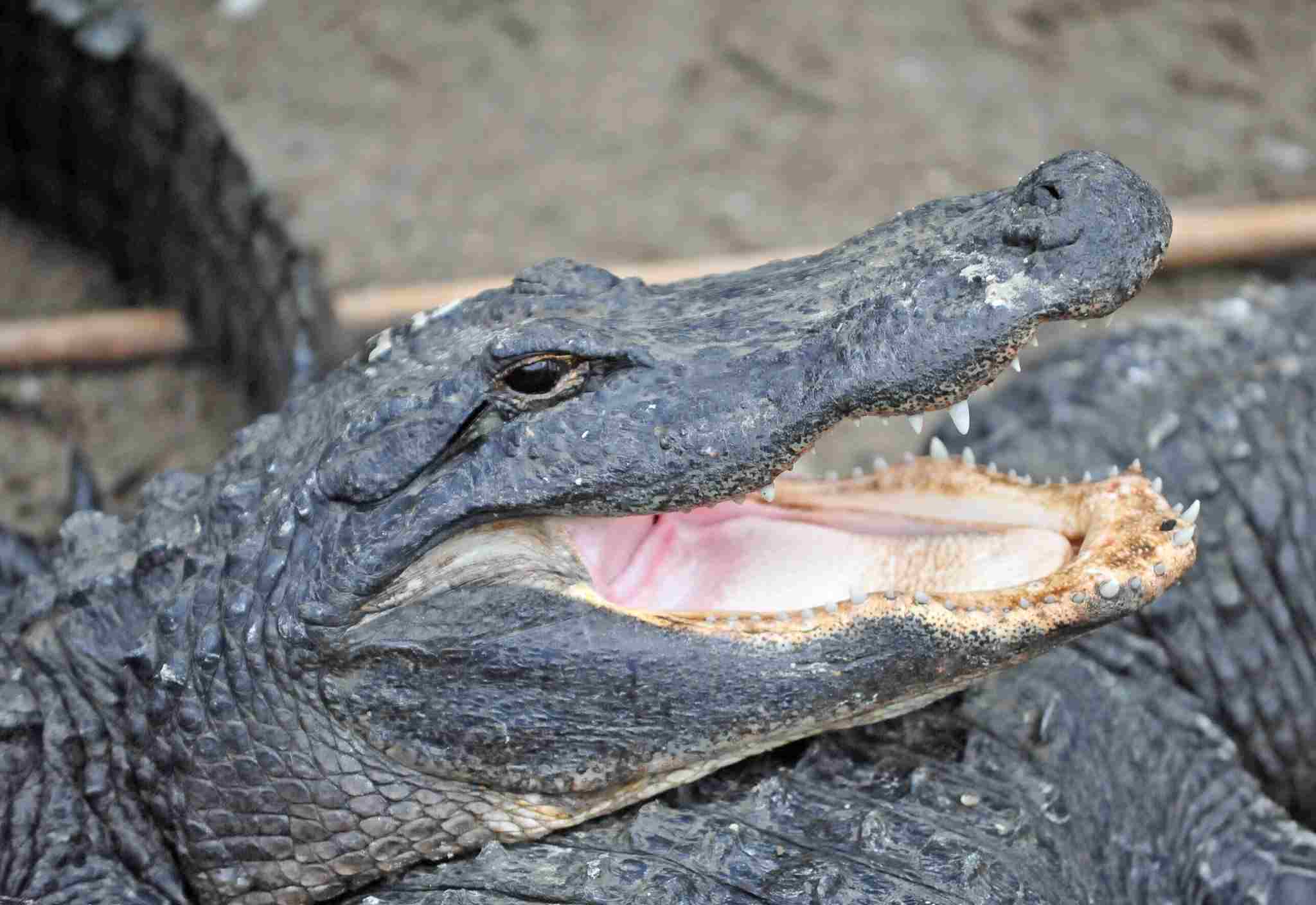
Caiman:
Excellent eyesight above and below the water’s surface
Keen sense of hearing for detecting vibrations
Alligator:
Well-developed eyesight, particularly adapted for low-light conditions
Sensitive snouts equipped with sensory organs for detecting prey
Crocodile:
Exceptional eyesight and night vision
Highly sensitive snouts and specialized sensory pits for detecting prey
Comparison: All three possess acute vision, with crocodiles often having specialized adaptations for low-light and nocturnal conditions.
Ecological Implications: Sensory adaptations influence their hunting strategies, aiding in the detection and capture of prey.
11. Overall Physical Capacity:
Caiman:
Balanced physical attributes for their size
Well-suited for capturing a variety of prey in their habitat
Alligator:
Robust build, combining strength and agility
Efficient hunters with a wide range of prey
Crocodile:
Varied physical capacities, depending on species
Versatile predators capable of hunting diverse prey
Comparison: Crocodiles often exhibit the most diverse and specialized physical capacities, while alligators and caimans display a balance of strength and agility.
Ecological Implications: Overall physical capacity contributes to their adaptability and roles within ecosystems.
12. Habitat Preference(s):
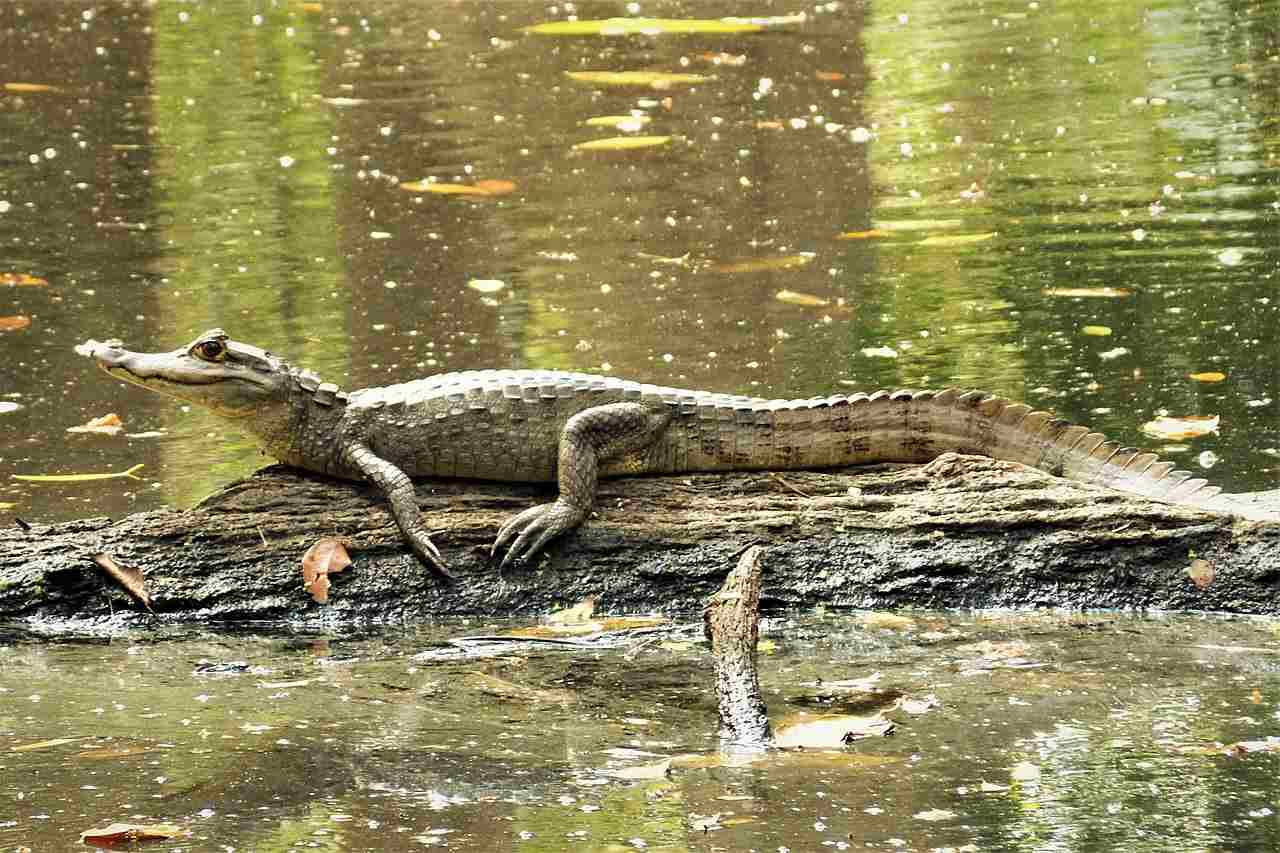
Caiman:
Thrive in freshwater habitats, including rivers, lakes, and swamps
Prefers areas with abundant vegetation for cover and ambush
Alligator:
Prefers freshwater habitats like swamps, marshes, and lakes
Exhibits territorial behavior in these environments
Crocodile:
Adaptable to various habitats, including freshwater, brackish, and saltwater
Coastal areas, estuaries, and riverbanks are common habitats
Comparison: Caimans and alligators predominantly inhabit freshwater environments, while crocodiles show a broader range, including saltwater habitats.
Ecological Implications: Habitat preferences influence the distribution and interactions of these species within ecosystems.
13. Tracks:
Caiman:
Distinctive tracks with claw marks, often in mud near water
Smaller and more compact tracks compared to larger crocodilians
Alligator:
Clawed tracks with distinctive toe impressions
Widely spaced tracks due to the gator’s sprawling gait
Crocodile:
Clawed tracks resembling those of alligators but with variations
Tracks can be found near water bodies, displaying a distinctive pattern
Comparison: All three leave clawed tracks, but differences in size and spacing distinguish between caimans, alligators, and crocodiles.
Ecological Implications: Tracking can aid researchers in monitoring populations and understanding their movements within ecosystems.
14. Lifespan:
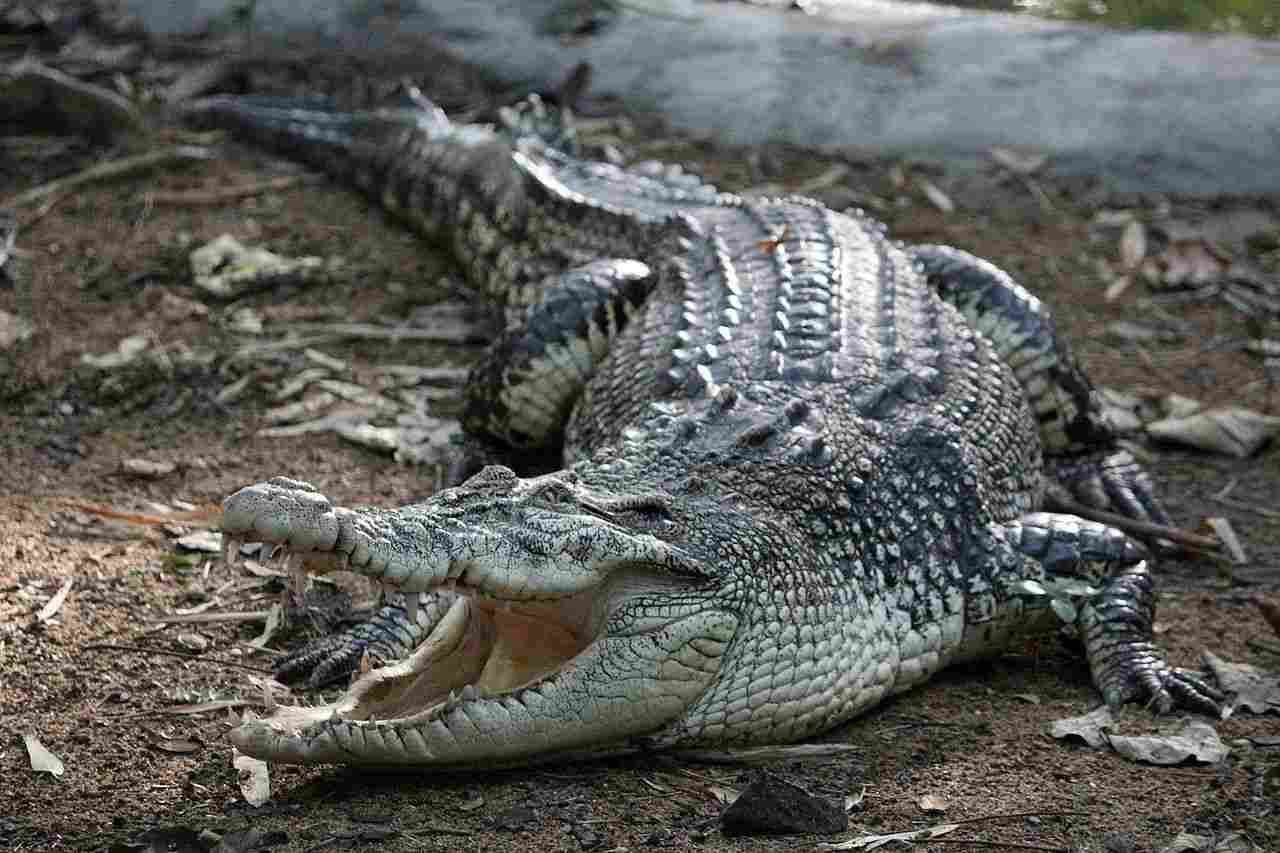
Caiman:
Typically live 20-40 years in the wild
Lifespan influenced by factors like species, habitat, and human impact
Alligator:
Can live 30-50 years in the wild
Longevity influenced by environmental conditions and human factors
Crocodile:
Varied lifespans; some species can live over 70 years
Factors such as size, species, and habitat contribute to lifespan
Comparison: Crocodiles often have longer lifespans compared to caimans and alligators, but specific factors play a crucial role in individual longevity.
Ecological Implications: Lifespan impacts population dynamics, reproductive strategies, and ecological roles within their habitats.
15. Mode of Feeding:
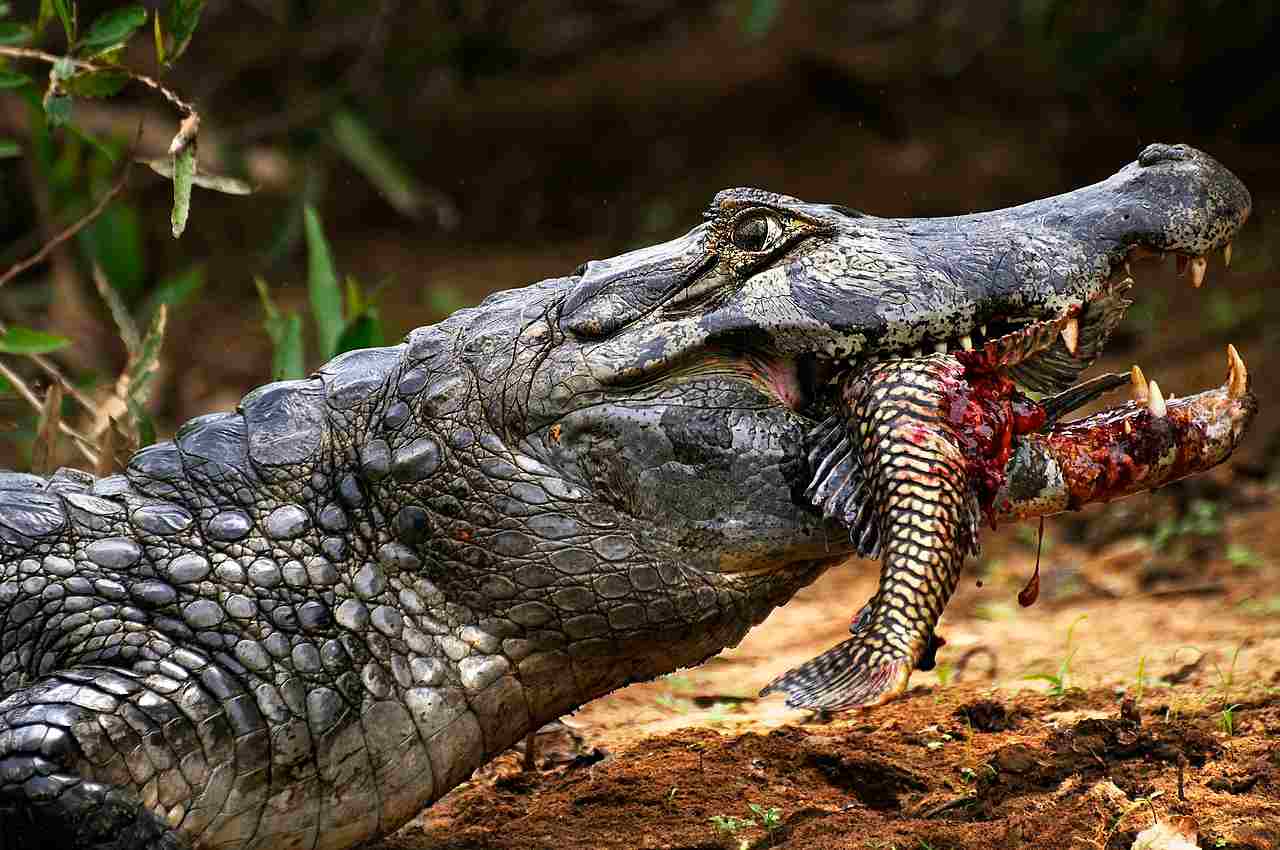
Caiman:
Opportunistic feeders, consuming fish, amphibians, and small mammals
Ambush predators relying on stealth for successful hunting
Alligator:
Generalist feeders, consuming fish, turtles, birds, and mammals
Patient hunters using their powerful jaws to capture prey
Crocodile:
Versatile feeders, hunting a wide range of prey including fish, birds, and large mammals
Exhibit various hunting strategies, including ambush and pursuit
Comparison: All three are opportunistic predators, but the specific prey they target and their hunting strategies vary.
Ecological Implications: Differences in feeding behavior contribute to the ecological balance and energy flow within their ecosystems.
16. Intelligence:
Caiman:
Limited cognitive abilities compared to larger crocodilians
Display basic problem-solving skills
Alligator:
Moderate intelligence, capable of learning and memory
Exhibit complex behaviors related to hunting and territory defense
Crocodile:
Considered more intelligent among crocodilians
Display problem-solving skills and complex behaviors, such as tool use
Comparison: Crocodiles are generally considered more intelligent than caimans, with alligators falling in between.
Ecological Implications: Intelligence influences adaptability and behavioral flexibility, impacting their interactions within ecosystems.
17. Social Behavior:
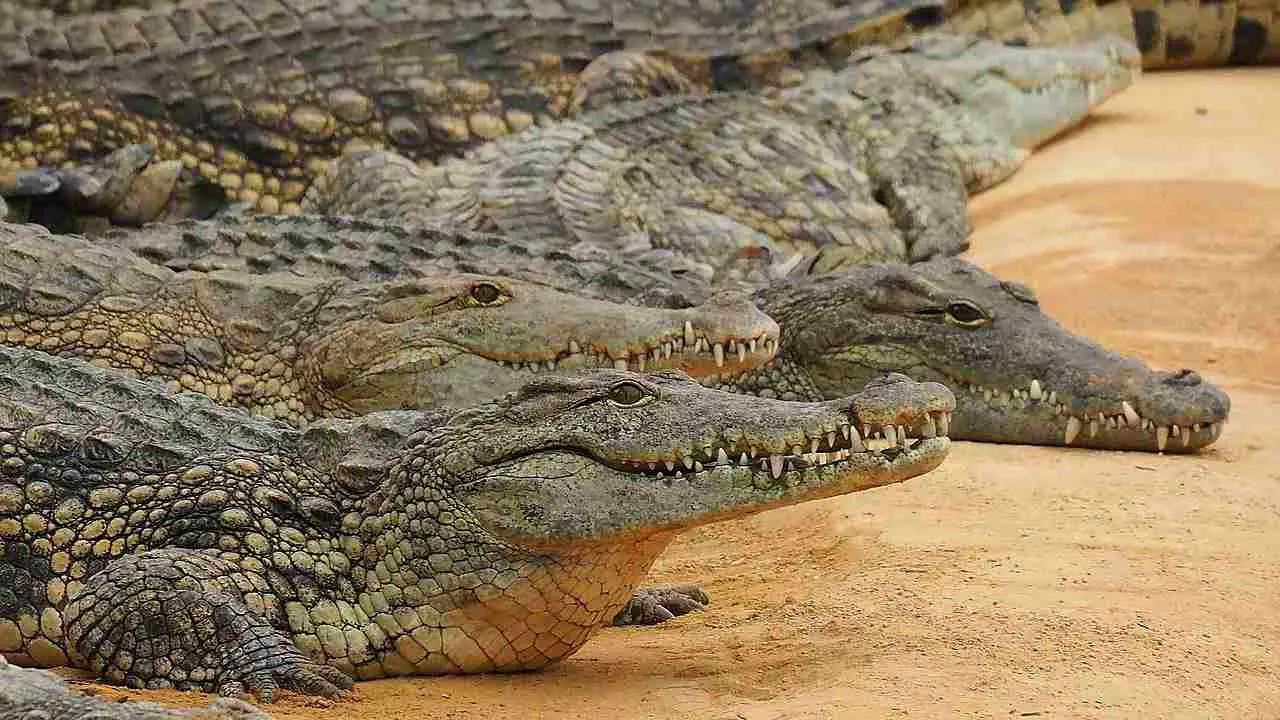
Caiman:
Solitary, with minimal social interactions
May tolerate the presence of other caimans in certain situations
Alligator:
Generally solitary, especially outside the mating season
May exhibit social behavior, especially during basking
Crocodile:
Can display both solitary and social behavior
Some species exhibit complex social structures and communal nesting
Comparison: Crocodiles show more varied social behaviors, including some species with complex social structures, while caimans and alligators are predominantly solitary.
Ecological Implications: Social behaviors impact population dynamics, reproductive strategies, and competition for resources within their ecosystems.
18. Mode of Reproduction:
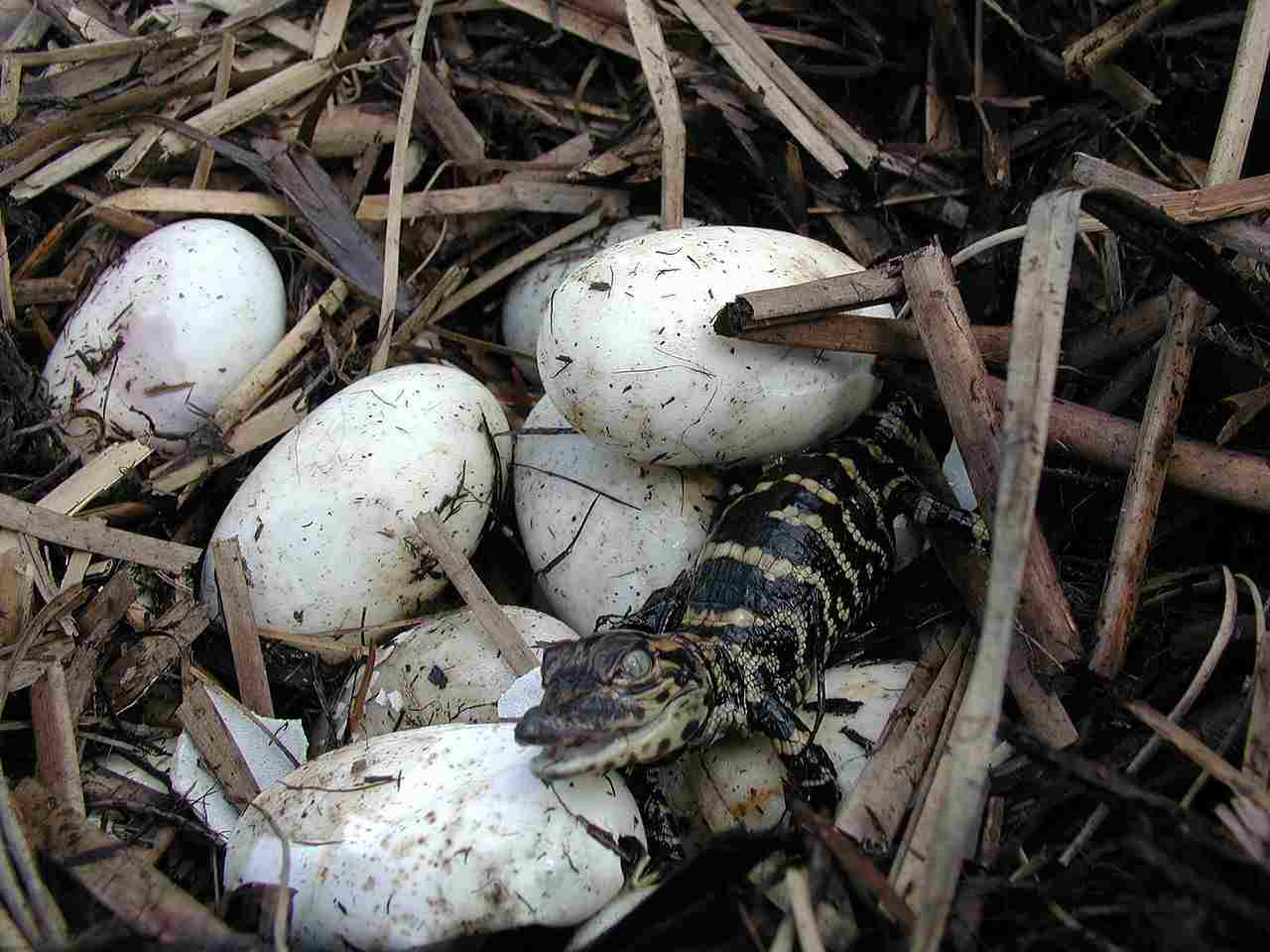
Caiman:
Oviparous; females lay eggs in nests made of vegetation
Guard eggs and hatchlings for a short period
Alligator:
Oviparous; females construct nests from vegetation to lay eggs
Females may guard nests and hatchlings for an extended period
Crocodile:
Oviparous; construct nests for egg-laying, varying by species
Exhibits diverse nesting behaviors; some species are more attentive parents
Comparison: All three are oviparous, laying eggs in carefully constructed nests, but the duration of parental care varies.
Ecological Implications: Reproductive strategies influence population dynamics, genetic diversity, and the survival of offspring within their habitats.
19. Parental Behavior:
Caiman:
Females provide minimal parental care, guarding nests briefly
Limited involvement in protecting hatchlings
Alligator:
Females display protective behavior, guarding nests and hatchlings
May assist hatchlings in reaching water after hatching
Crocodile:
Varies by species; some crocodiles exhibit extensive parental care
Females actively guard nests and provide protection to hatchlings
Comparison: Crocodiles, particularly some species, show more involved parental care compared to caimans and alligators.
Ecological Implications: Parental behavior affects the survival rates of offspring and contributes to population dynamics within ecosystems.
20. Proximity to Human-Inhabited Areas:
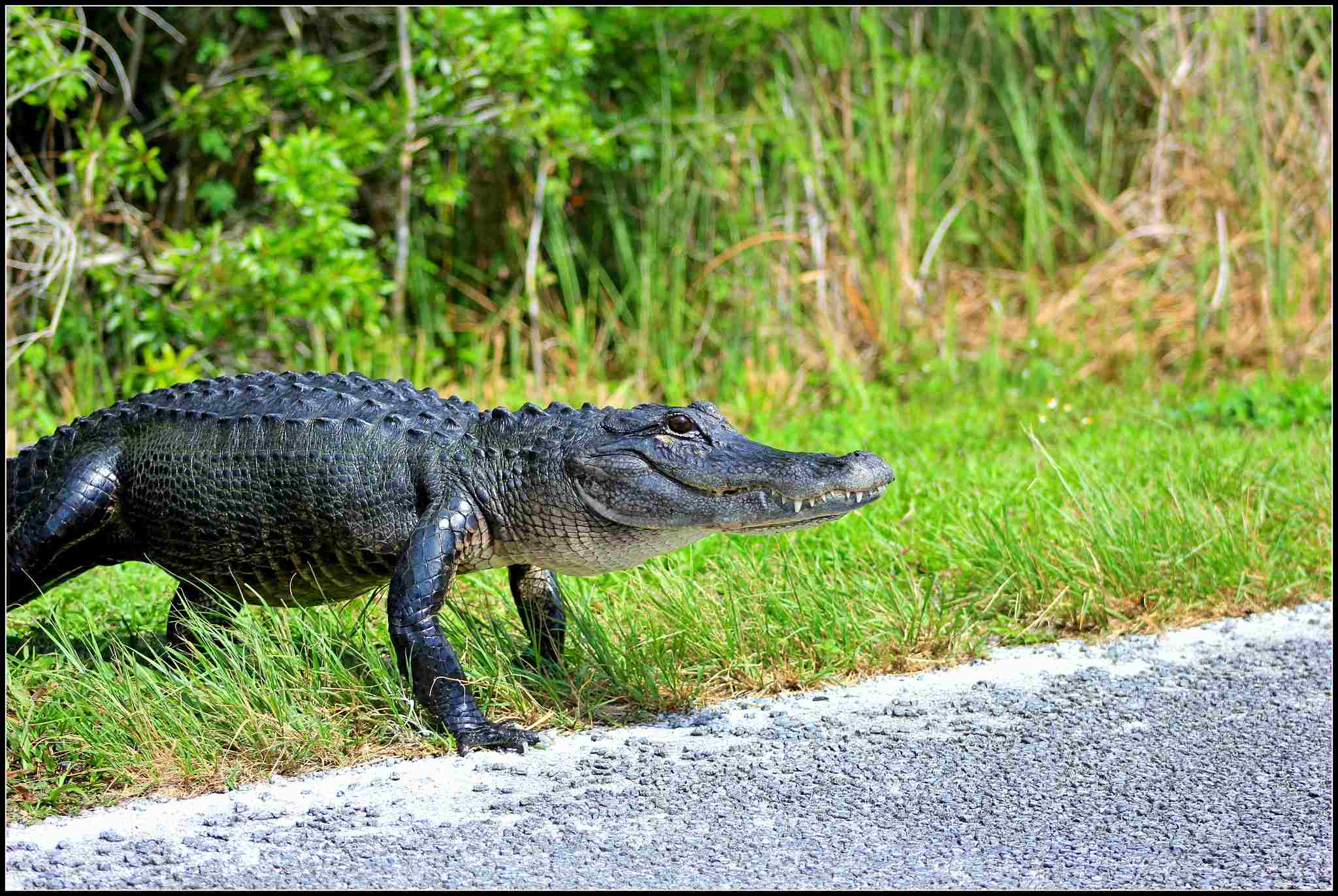
Caiman:
Found in freshwater habitats, occasionally near human settlements
Can adapt to disturbed habitats but generally avoid direct human interaction
Alligator:
Commonly found in freshwater bodies near human-inhabited areas
May inhabit golf course ponds, urban lakes, and other human-altered environments
Crocodile:
Some species inhabit areas close to human settlements
Human-crocodile conflicts are more common in regions where their habitats overlap
Comparison: Alligators are more commonly found in close proximity to human-inhabited areas compared to caimans and certain crocodile species.
Ecological Implications: Human interactions with these reptiles can lead to conflicts and impact the conservation status of these species.
21. Behavior Toward Humans:
Caiman:
Generally shy and avoidant of humans
Rarely pose a threat unless provoked or cornered
Alligator:
Often wary of humans but can become habituated
Rare cases of aggression, usually related to food conditioning or nesting sites
Crocodile:
Can be more aggressive, especially in regions with human presence
Aggressive behavior may result from territoriality, defense of nests, or food-related interactions
Comparison: Crocodiles may exhibit more aggressive behavior towards humans compared to caimans and alligators.
Ecological Implications: Human-wildlife conflicts can arise when these reptiles inhabit areas close to human settlements, impacting both human safety and the conservation of these species.
22. Danger Posed to Humans:
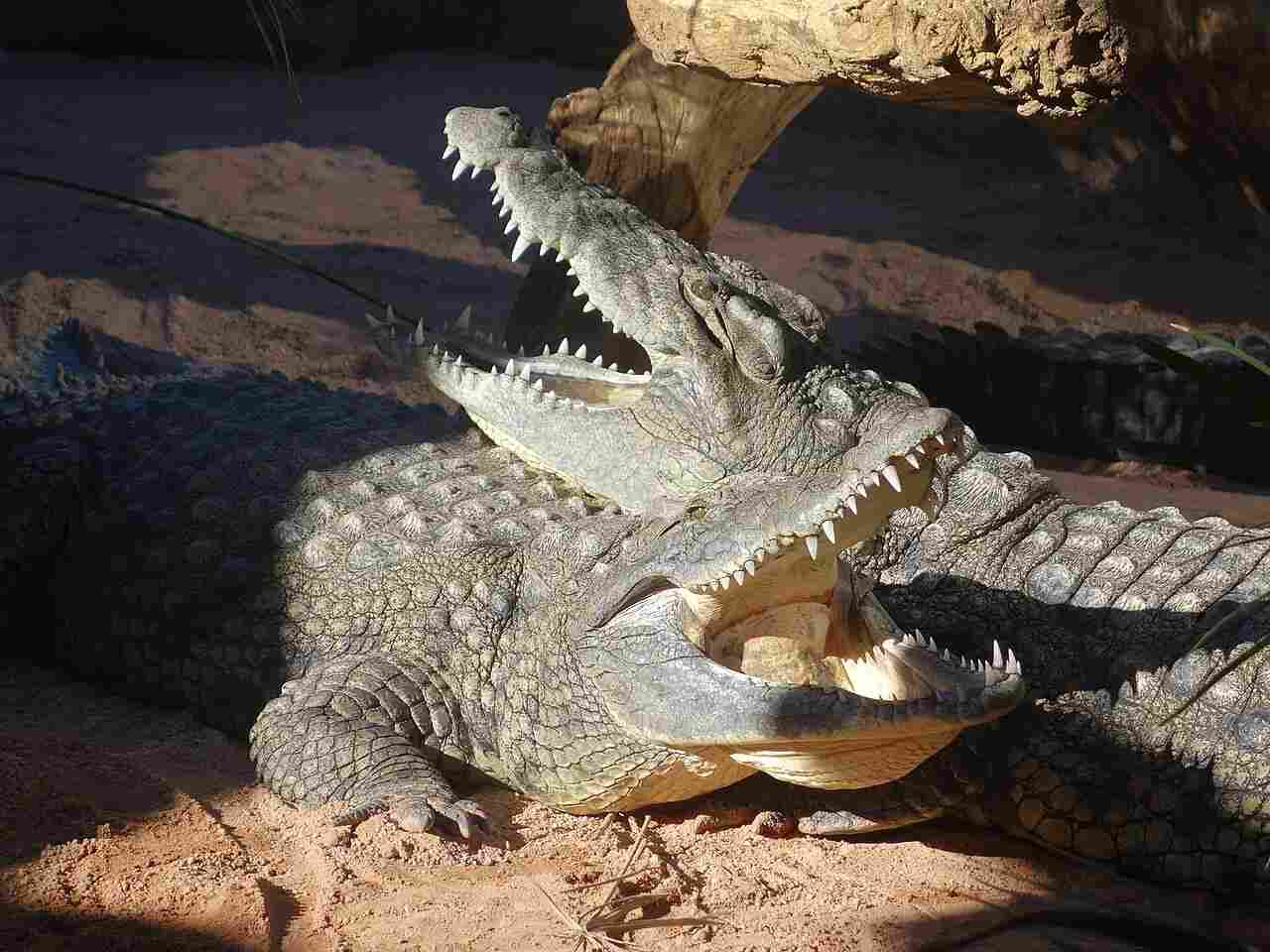
Caiman:
Generally pose a low threat to humans
Rare instances of attacks, often due to provocation or mistaken identity
Alligator:
Considered less dangerous than crocodiles
Attacks are rare but can occur, often related to human proximity
Crocodile:
Some species are considered more dangerous to humans
Attacks can be aggressive and result in severe injuries or fatalities
Comparison: Crocodiles are generally considered more dangerous to humans than caimans and alligators.
Ecological Implications: Understanding the level of danger helps in managing human-crocodilian interactions and mitigating potential conflicts.
23. Associated Precautions:
Caiman:
Awareness and avoidance of caiman habitats
Caution when near water bodies in regions where caimans are present
Alligator:
Education on alligator behavior and precautions
Avoiding direct contact and not feeding alligators
Crocodile:
Strict precautions in areas with known crocodile populations
Signs, education, and regulations to minimize human-crocodile conflicts
Comparison: Precautions involve understanding and respecting the behavior of these reptiles, with crocodile precautions often being more stringent.
Ecological Implications: Responsible human behavior is crucial for coexisting with these species and maintaining ecological balance.
24. Conservation Status:
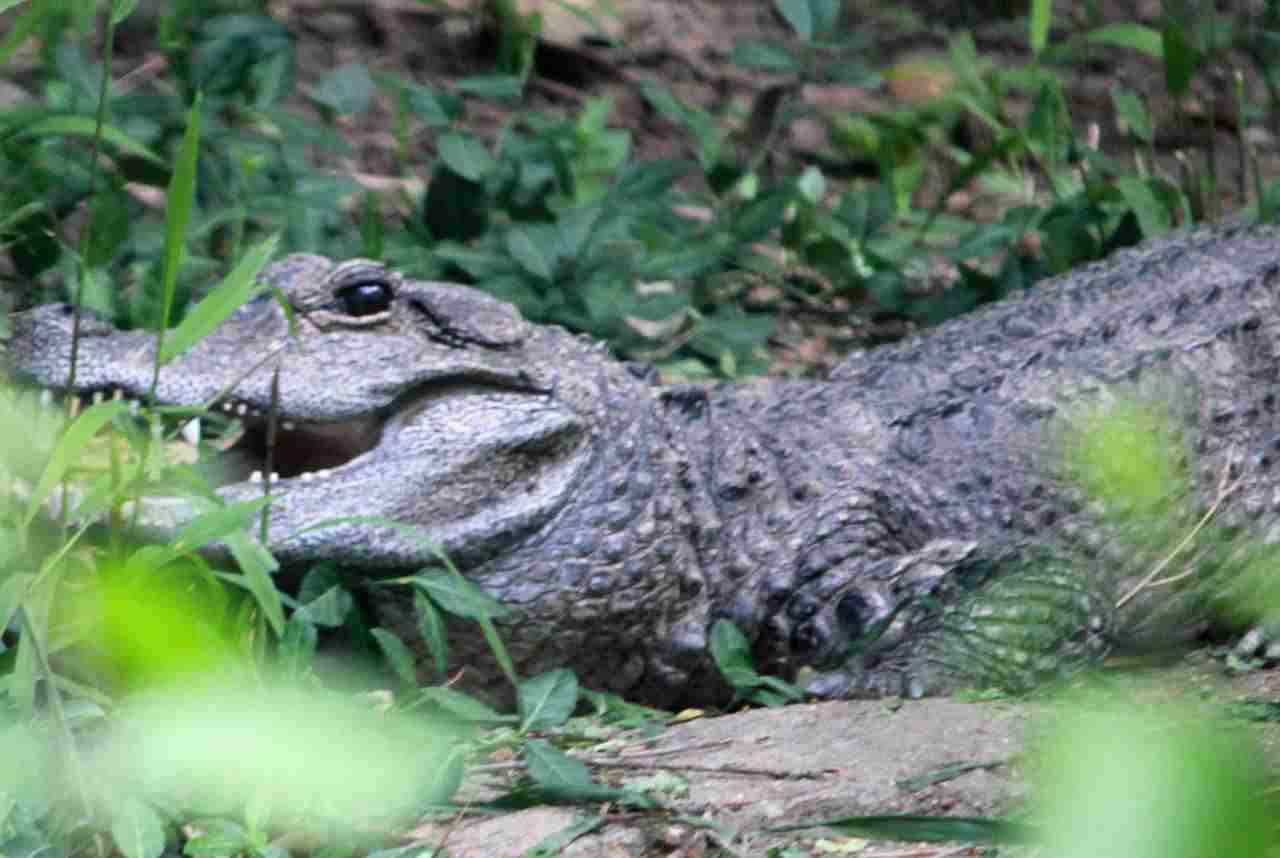
Caiman:
Various species with diverse conservation statuses
Some populations face threats from habitat loss and illegal hunting
Alligator:
Populations have recovered in some regions due to conservation efforts
Classified as least concern, but habitat preservation remains important
Crocodile:
Some species are endangered due to habitat loss and hunting
Conservation efforts vary, with certain species facing significant threats
Comparison: Conservation statuses vary among species, with crocodiles often facing more significant conservation challenges.
Ecological Implications: Conservation efforts are essential for maintaining biodiversity and the ecological roles of these reptiles.
Summary of Comparison
Taxonomy:
Caiman: Family Alligatoridae, Subfamily Caimaninae, Genus Caiman
Alligator: Family Alligatoridae, Subfamily Alligatorinae, Genera Alligator
Crocodile: Family Crocodylidae, Various Subfamilies, Various Genera
Appearance:
Caiman: Robust build, broad snout, typically olive to brown coloration
Alligator: Broad, U-shaped snout, dark coloration from black to dark brown
Crocodile: V-shaped snout, generally lighter coloration, more pointed appearance
Size:
Caiman: Generally smaller, 4 to 8 feet
Alligator: Moderate size, males 11 to 15 feet
Crocodile: Variable, some species exceed 20 feet
Weight:
Caiman: Lighter, 15 to 100 kg
Alligator: Heavier, males 200 to 450 kg
Crocodile: Varied, some species over 1000 kg
Bite Force (PSI):
Caiman: Moderate, around 1500 PSI
Alligator: Strong, approximately 2000 PSI
Crocodile: Variable, some over 5000 PSI
Physical Offensive Advantages:
Caiman: Agile in water, sharp teeth
Alligator: Strong bite, mobility
Crocodile: Speed, powerful tail
Physical Defensive Advantages:
Caiman: Water retreat, osteoderms
Alligator: Quick water retreat, bony plates
Crocodile: Aggressive defense, scaly skin
Speed:
Caiman: Up to 32 km/h
Alligator: Around 30 km/h
Crocodile: Up to 32 km/h
Agility:
Caiman: Maneuverable in water
Alligator: Nimble despite size
Crocodile: Agile in and out of water
Senses:
Caiman: Excellent eyesight, keen hearing
Alligator: Well-developed eyesight, sensitive snouts
Crocodile: Exceptional eyesight, specialized sensory pits
Overall Physical Capacity:
Caiman: Balanced for size
Alligator: Robust build, strength, and agility
Crocodile: Varied capacities depending on species
Habitat Preference(s):
Caiman: Freshwater habitats with vegetation
Alligator: Freshwater habitats like swamps
Crocodile: Adaptable to freshwater, brackish, and saltwater
Tracks:
Caiman: Distinctive tracks with claw marks
Alligator: Clawed tracks with toe impressions
Crocodile: Clawed tracks resembling alligators
Lifespan:
Caiman: 20-40 years
Alligator: 30-50 years
Crocodile: Varied, some over 70 years
Mode of Feeding:
Caiman: Opportunistic, ambush predator
Alligator: Generalist, patient hunter
Crocodile: Versatile feeders, various strategies
Intelligence:
Caiman: Limited
Alligator: Moderate, capable of learning
Crocodile: Considered more intelligent
Social Behavior:
Caiman: Solitary, minimal interactions
Alligator: Generally solitary, occasional social behavior
Crocodile: Varied, some species with complex social structures
Mode of Reproduction:
Caiman: Oviparous, guard eggs briefly
Alligator: Oviparous, females guard nests and hatchlings
Crocodile: Oviparous, diverse nesting behaviors
Parental Behavior:
Caiman: Minimal parental care
Alligator: Protective, may assist hatchlings
Crocodile: Varies by species, some with extensive care
Proximity to Human-Inhabited Areas:
Caiman: Near freshwater, cautious of humans
Alligator: Commonly near human-inhabited areas
Crocodile: Some species inhabit areas close to humans
Behavior Toward Humans:
Caiman: Shy, rarely aggressive unless provoked
Alligator: Wary, aggression may occur in specific situations
Crocodile: Can be aggressive, especially in human presence
Danger Posed to Humans:
Caiman: Generally low threat
Alligator: Less dangerous than crocodiles
Crocodile: More dangerous, potential for severe attacks
Associated Precautions:
Caiman: Awareness and avoidance
Alligator: Education and avoiding direct contact
Crocodile: Strict precautions in known crocodile areas
Conservation Status:
Caiman: Various statuses, influenced by habitat loss
Alligator: Least concern, conservation efforts important
Crocodile: Varied, some species endangered
Conclusion
I. Similarities:
All three belong to the order Crocodylia and share common ancestral traits.
Oviparous reproduction, with females laying eggs in carefully constructed nests.
II. Differences:
Varied habitat preferences, with crocodiles showing more adaptability.
Differences in danger posed to humans and associated precautions.
Distinctive behaviors, such as parental care and social interactions, influencing their ecological roles.
